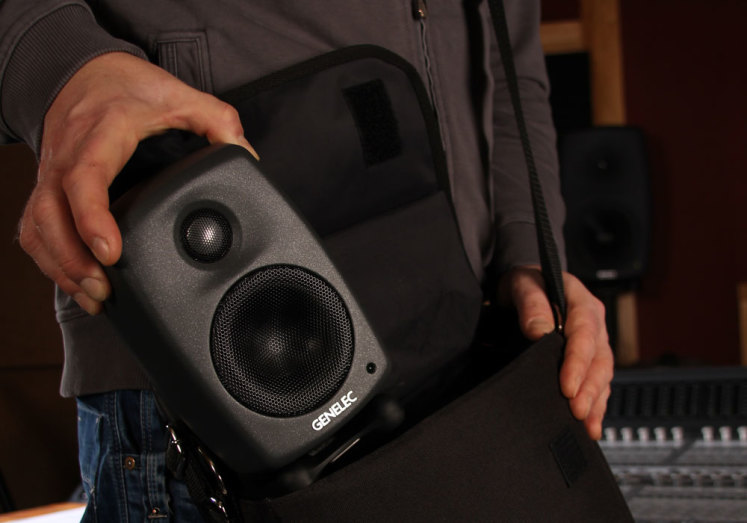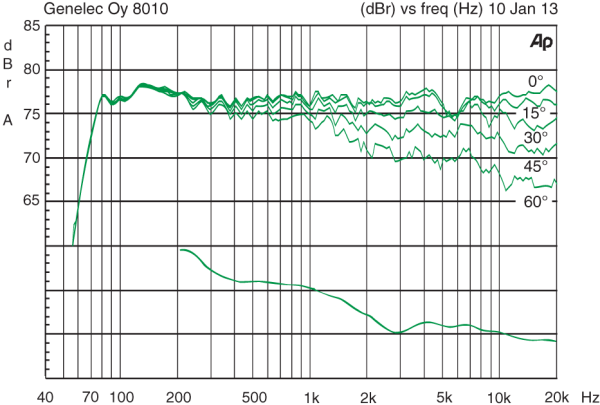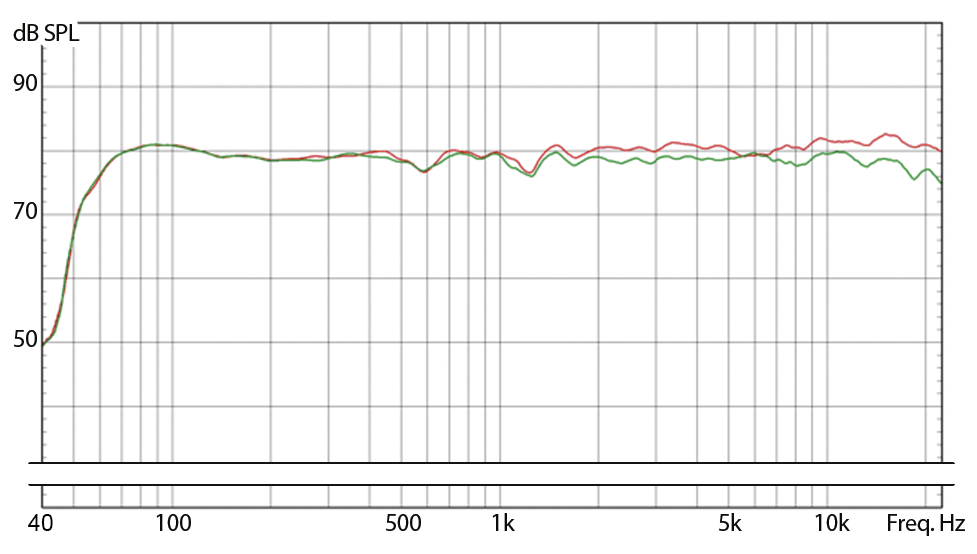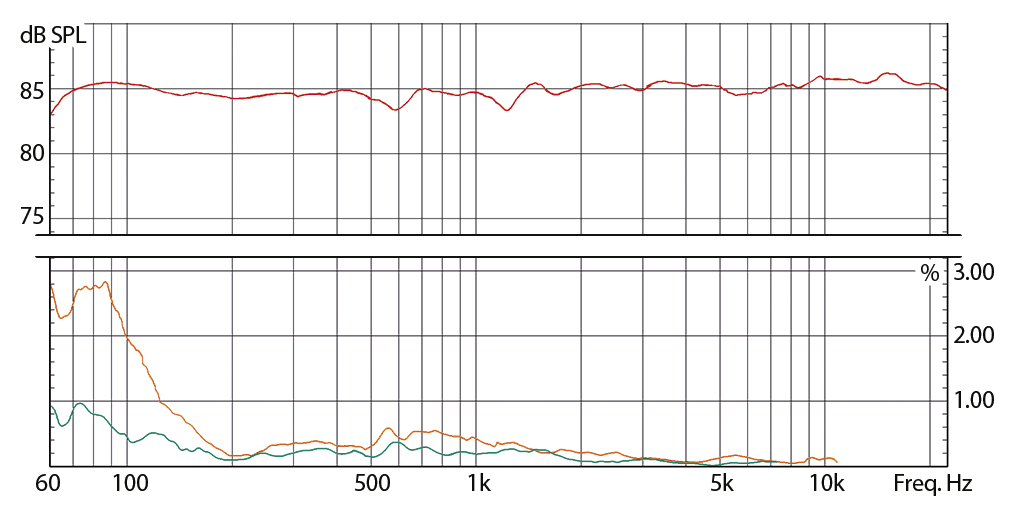This is a (quick) review and detailed measurements of the Sehlin Helium DIY ultra-compact speaker kit. It was sent to me by the designer and member @Mudjock. Here is the cost factors as he provided me:
Drivers + crossover parts: $108.84
Cabinet kit and binding posts: $31.44
This is a very small speaker which literally fits int he palm of your hand:

Needless to say, it was a joy to put on the measurement stand and bring up to my work area to listen.
Measurements that you are about to see were performed using the Klippel Near-field Scanner (NFS). This is a robotic measurement system that analyzes the speaker all around and is able (using advanced mathematics and dual scan) to subtract room reflections (so where I measure it doesn't matter). It also measures the speaker at close distance ("near-field") which sharply reduces the impact of room noise. Both of these factors enable testing in ordinary rooms yet results that can be more accurate than an anechoic chamber. In a nutshell, the measurements show the actual sound coming out of the speaker independent of the room.
I used over 800 measurement point which was enough to compute the sound field of the speaker within 1% to 2% error.
Temperature was 81 degrees. Measurement location is at sea level so you compute the pressure.
Measurements are compliant with latest speaker research into what can predict the speaker preference and is standardized in CEA/CTA-2034 ANSI specifications. Likewise listening tests are performed per research that shows mono listening is much more revealing of differences between speakers than stereo or multichannel.
Spinorama Audio Measurements
Acoustic measurements can be grouped in a way that can be perceptually analyzed to determine how good a speaker is and how it can be used in a room. This so called spinorama shows us just about everything we need to know about the speaker with respect to tonality and some flaws:

I went back and forth with the designer as his measurements were smoother than mine. Ultimately he decided that these are probably accurate. If so it is quite uneven as you see.


I could not drive the speaker beyond 80 dB SPL (naturally):






Quick Speaker Listening Test
My near-field workstation area is in pieces so I initially tested the Helium far field. Well, let me just say the sound is not right. Tonality is wrong (muffled and boomy), and there is grittiness to sound which I did like. I then sat in front of it while still on my normal stand and the situation improved. But the grittiness was still there.
Conclusions
I don't know how to judge this speaker any other way than I do normally which is to hold it up to the best sound one could get. It is likely quite unfair to do that relative to the tiny size of this speaker. I just don't have another frame of reference. As is then, I am afraid this is a failing attempt. I hope the designer uses this information to refine the product and produce a follow up with better performance. Having something small but very high quality would be dandy.
-----------
As always, questions, comments, recommendations, etc. are welcome.
Picked probably 30 pounds of tomatoes today. A lot had gone bad because I had not had time to pick them. You all are keeping me too darn busy to take care of the garden! So you better pay up and pay up good by donating what you can using: https://www.audiosciencereview.com/forum/index.php?threads/how-to-support-audio-science-review.8150/
Drivers + crossover parts: $108.84
Cabinet kit and binding posts: $31.44
This is a very small speaker which literally fits int he palm of your hand:
Needless to say, it was a joy to put on the measurement stand and bring up to my work area to listen.
Measurements that you are about to see were performed using the Klippel Near-field Scanner (NFS). This is a robotic measurement system that analyzes the speaker all around and is able (using advanced mathematics and dual scan) to subtract room reflections (so where I measure it doesn't matter). It also measures the speaker at close distance ("near-field") which sharply reduces the impact of room noise. Both of these factors enable testing in ordinary rooms yet results that can be more accurate than an anechoic chamber. In a nutshell, the measurements show the actual sound coming out of the speaker independent of the room.
I used over 800 measurement point which was enough to compute the sound field of the speaker within 1% to 2% error.
Temperature was 81 degrees. Measurement location is at sea level so you compute the pressure.
Measurements are compliant with latest speaker research into what can predict the speaker preference and is standardized in CEA/CTA-2034 ANSI specifications. Likewise listening tests are performed per research that shows mono listening is much more revealing of differences between speakers than stereo or multichannel.
Spinorama Audio Measurements
Acoustic measurements can be grouped in a way that can be perceptually analyzed to determine how good a speaker is and how it can be used in a room. This so called spinorama shows us just about everything we need to know about the speaker with respect to tonality and some flaws:
I went back and forth with the designer as his measurements were smoother than mine. Ultimately he decided that these are probably accurate. If so it is quite uneven as you see.
I could not drive the speaker beyond 80 dB SPL (naturally):
Quick Speaker Listening Test
My near-field workstation area is in pieces so I initially tested the Helium far field. Well, let me just say the sound is not right. Tonality is wrong (muffled and boomy), and there is grittiness to sound which I did like. I then sat in front of it while still on my normal stand and the situation improved. But the grittiness was still there.
Conclusions
I don't know how to judge this speaker any other way than I do normally which is to hold it up to the best sound one could get. It is likely quite unfair to do that relative to the tiny size of this speaker. I just don't have another frame of reference. As is then, I am afraid this is a failing attempt. I hope the designer uses this information to refine the product and produce a follow up with better performance. Having something small but very high quality would be dandy.
-----------
As always, questions, comments, recommendations, etc. are welcome.
Picked probably 30 pounds of tomatoes today. A lot had gone bad because I had not had time to pick them. You all are keeping me too darn busy to take care of the garden! So you better pay up and pay up good by donating what you can using: https://www.audiosciencereview.com/forum/index.php?threads/how-to-support-audio-science-review.8150/






